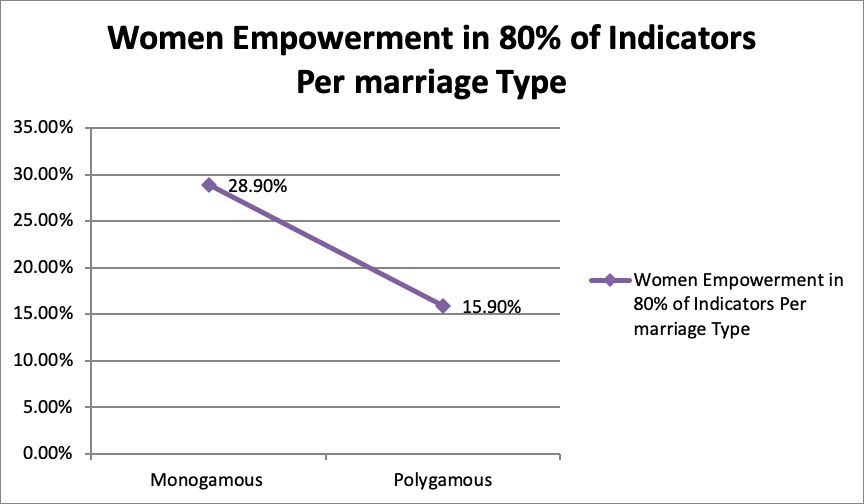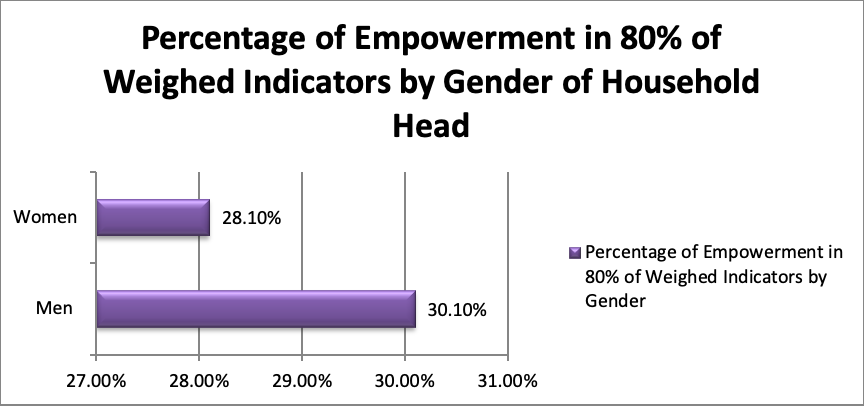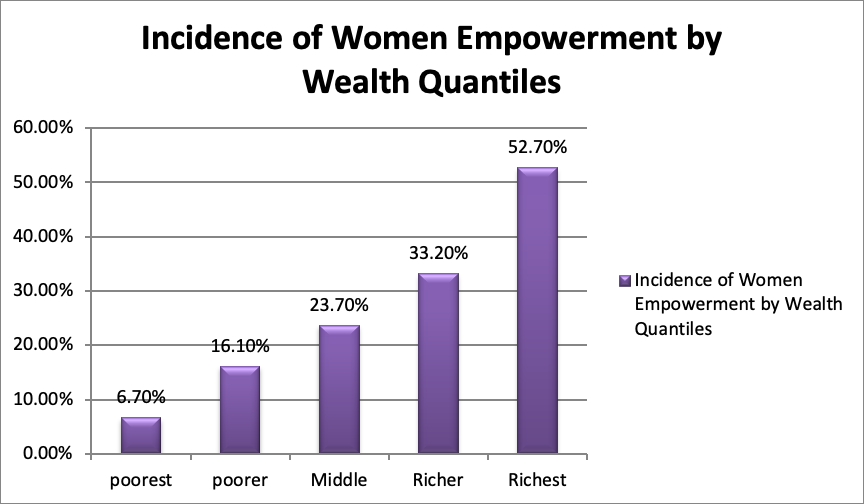By Carolyne Kamau
What Are The Women Empowerment Measures in Kenya Today?
Marking 10 years since implementation of the devolution government
Note: All the data is adapted from KNBS 2014.
Two Kenyan women. Photo courtesy.
Introduction
The quest for uplifting women started when movements for women's rights grew in strength and intensity in the past. There was a need to develop the roles of women in society and their participation in decision-making processes. Today, there are many organizations locally and internationally that support the development of women in various capacities. According to the UN under Sustainable Development Goals (SDGs), "ending discrimination among women is not only a basic right but a necessary factor for development and growth." SDG number 5 is tailored explicitly towards uplifting women and girls who, in previous years, were sidelined from basic processes in the society.
Kenya has made considerable efforts to ensure equity and development of women in society. The primary issue many women encountered in the past is the inequitable distribution of resources. This issue became a substantial factor in the government’s devolution process. The primary aim of devolution was to decentralize government processes and, in turn, bring resources closer to the people. 2020 marks ten years into the devolution government; National and County Governments in Kenya.
“In response to this milestone, the Republic of Kenya, UN women, KNBS and UNICEF partnered to produce a report on women empowerment in Kenya. The report measures empowerment in the ability of women to make decisions in the legislative, household, economic, and societal capacities. This essay presents the findings of that research and their relevance to the issues women face today. The information in the report can be used by different entities to measure women empowerment and to tailor development considering the indicators presented.”
Indicators
The report selected women Empowerment Index (WEI) by determining the extent of the following indicators cutting across various development measures:
1. Attitudes towards wife-beating after; refusing sex with husband, going out without permission, neglecting children and burning food
2. Human and social resources; access to media, FGM, family planning, and other contraception methods.
3. Household decision making; household purchases, healthcare, family visitations, and money spending.
4. Control over sexual relations-refusal to have sex, usage of condoms, and access to condoms.
5. Economic-secondary school completion paid employment and
The above indicators were measures among two significant groups: women in union and women not in a union. Women in union are those that are in committed relationships and living together with their spouses. The demography of women involved were those between 15 years and 49 years.
Analysis of Findings by The Youth Cafe
Figure one
According to the above figure, 40.1% of women in urban areas are empowered when considering 80% of the indicators explained above. This is a high percentage considering that only 22% of women in rural Kenya are enabled. An average of the two sectors shows that 29.2% of women in Kenya are empowered in at least 80% of the indicators cutting through education, social life, reproductive health, and economics. This change can be explained through the differences between resource mobilization and allocation in rural and urban areas. Urban areas are generally the hub for many business headquarters and government services. Urban places are also high in population, which makes them ideal for many business startups. Such statistics favor women in urban areas economically.
Figure 2.
When considering the percentage of the determinants in the Women Empowerment Index (WEI), it is clear that women are more empowered when 60 % of the indicators are considered. The statistics show that there is significant room for improvement to guarantee women in Kenya are empowered.
Figure 3.
The figure above shows the differences in empowerment by age, considering 80% of the indicators. Younger women are more empowered than older women considering these statistics. The linear progression shown indicates that those women over 40 in age are significantly less empowered than those between 15 and 19 years. This difference can be explained through the historical progression of Kenya. Older women did not have the quality of education that younger women have today. Education is a significant factor since it influences several indicators in the WEI. Less education means limited economic opportunities, which also lead to an overreliance on men, who were prioritized in the past. As a developing country, younger women may continue to have better opportunities for empowerment compared to older women. However, the percentage of empowerment will also increase in all ages as time goes.
Figure 4.
Women empowerment by marital is highest for women who are single and lowest for those who are widowed. Single women have the liberty to make their own decisions on many fronts . However, those who are in unions have to share the decision-making process with their spouses, thus reducing their power over different matters. In Kenya, the man remains to be the head of the family, and as such, more power is accrued to him instead of the woman. This status of power dynamics affects other indicators, such as economic power and sexual/reproductive power. However, figure 5 below shows that unions are not the same.
Figure 5.
Women in monogamous relationships tend to be more empowered compared to those in polygamous relationships. This difference can be explained through the limitation of resources and division among family members. People in a polygamous marriage share the limited resources among all their members who are more compared to monogamous relationships. Considering that the man is still the head of the family in a polygamous union, there is more pressure on women, which reduces their effectiveness.
According to figure 6 below, empowerment by age in Kenya is still higher for men when comparing the two genders. Households led by men registered more empowerment for women than those led by women. The patriarchal system in society can explain the difference in empowerment between the two genders. Women who participated in the research pointed out that the men in their life were more empowered than them, thus making better leaders. Although the percentage of the discrepancy is not very high, it is clear that men have higher chances for growth.
Figure 6.
However, the mission is not for women to be more empowered than men but rather, to effectuate the policy principle of "no man left behind." Both genders have a unique presence to contribute to the development of the country.
Figure 7.
Figure 7 above affirms the result of figure 6 by showing the relationship between education and the head of the house. When the head of the house is more educated, then the more empowered are women in their life. When the household head has zero education, he gives less power to the women around him. Considering that the man is predominantly the head of the family in unions, empowering men trickles down to empowered women.
Wealth affects empowerment since it dictates the resources available for women in families. Wealthier families mean that women will have more resources at their disposal, which they can use creatively to create a better reality. Wealth ensures the affordability of education, healthcare, and other learning opportunities.
Conclusion
Women empowerment is a globally recognized issue that affects the development of a country. Empowered women lead to an empowered society due to ease in good decision making, mobilization of resources, and accessibility of growth variables. The findings in the report are proof of the current statistics of women and empowerment in Kenya, considering different indicators. The development of measures in the report was justified since there is proof of the way various factors affect women. Different organizations in Kenya are pushing the objective of women empowerment by tailoring their services to give opportunities to women and young girls. Women are gaining momentum in various forums as the government of Kenya provides further insight into the education, employment, and information-sharing activities for girls. Organizations and different entities can tailor their work to improve women participation and positions in education, health development, household power, economic decisions and social status. These factors are established measures for women empowerment in Kenya and other countries. We are yet to reap the full benefits of the devolved system, and women empowerment will likely increase as the system reaches its full potential.
Caroline Wanjiku Kamau is a Partnerships and Business Development Associate at The Youth Cafe
Have a question or comment? Contact us.










